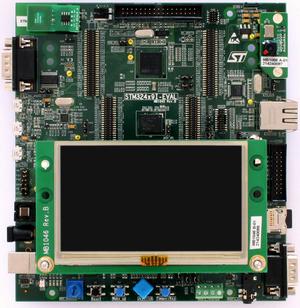Tracing on ST STM32F439
Contents
This article describes how to get started with trace on the ST STM32F439 MCU. This article assumes that there is already a basic knowledge about trace in general (what is trace, what different implementations of trace are there, etc.). If this is not the case, we recommend to read Trace chapter in the J-Link User Manual (UM08001). The ST STM32F439 MCU implements tracing via pins, so a J-Trace can be used for tracing.
Minimum requirements
In order to use trace on the ST STM32F439 devices, the following minimum requirements have to be met:
- J-Link software version V6.14a or later
- Ozone V2.22o or later (if streaming trace and / or the sample project from below shall be used)
- J-Trace PRO for Cortex-M HW version V1.0 or later
Sample project
Streaming trace
The following sample project is designed to be used with J-Trace PRO and Ozone to demonstrate streaming trace. The project has been tested with the minimum requirements mentioned above and a STM324x9I-Eval Evalboard. The sample project comes with a pre-configured project file for Ozone that runs out-of-the box. In order to rebuild the sample project, SEGGER Embedded Studio can be used.
ST_STM32F439_90MHz_TraceExample.zip
Specifics/Limitations
The ST STM32F439 MCU supports traceclockspeeds up to 90 MHz. The evaluation board used for the example project has a board specific limitation, that no 4-bit trace is available so the example project was configured to run in 2-bit trace mode. To enable the remaining pins for your own board simply edit the ST_STM32F439_Modified_Traceconfig.JLinkScript and replace the 2 in JLINK_TRACE_PortWidth = 2; with a 4.
